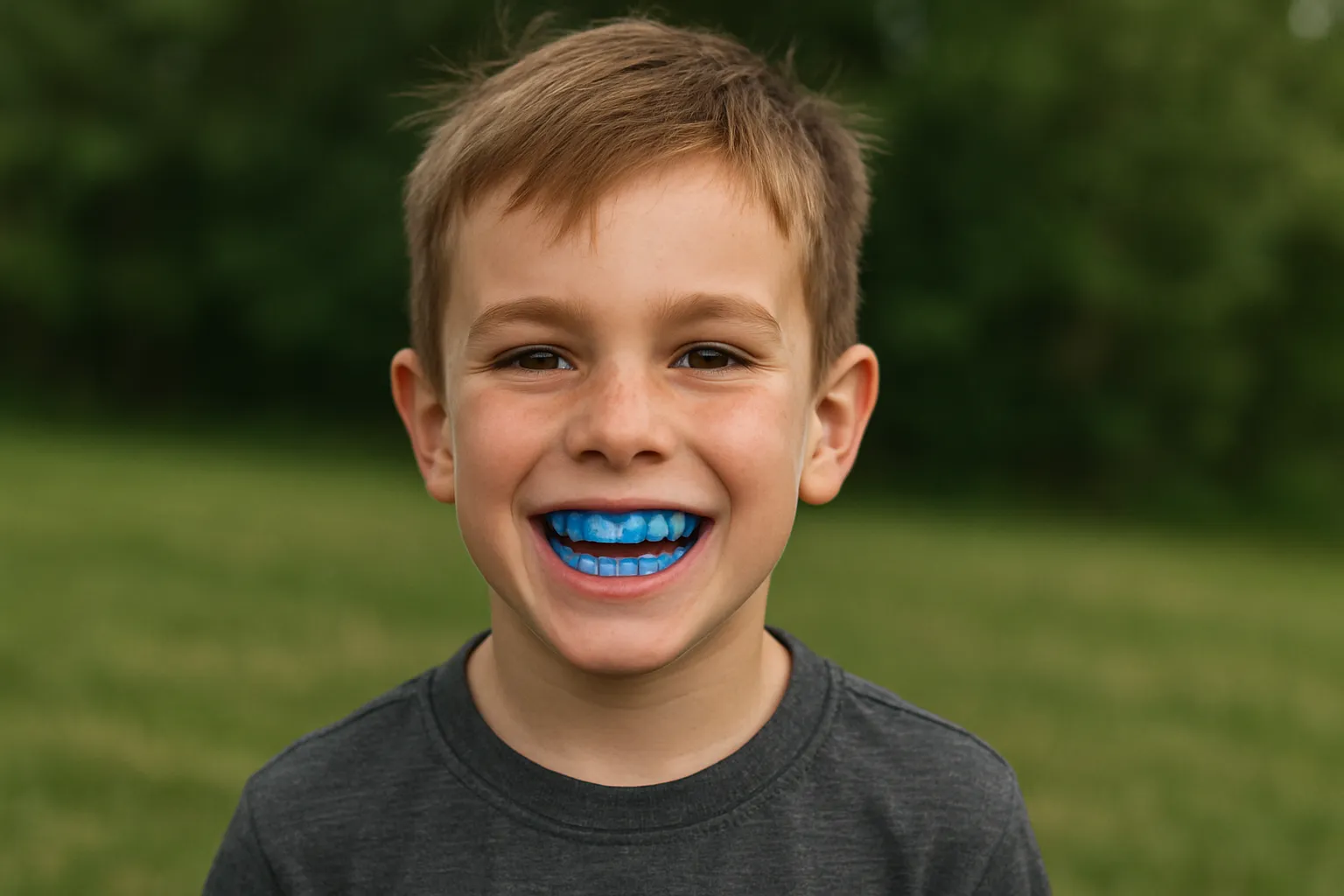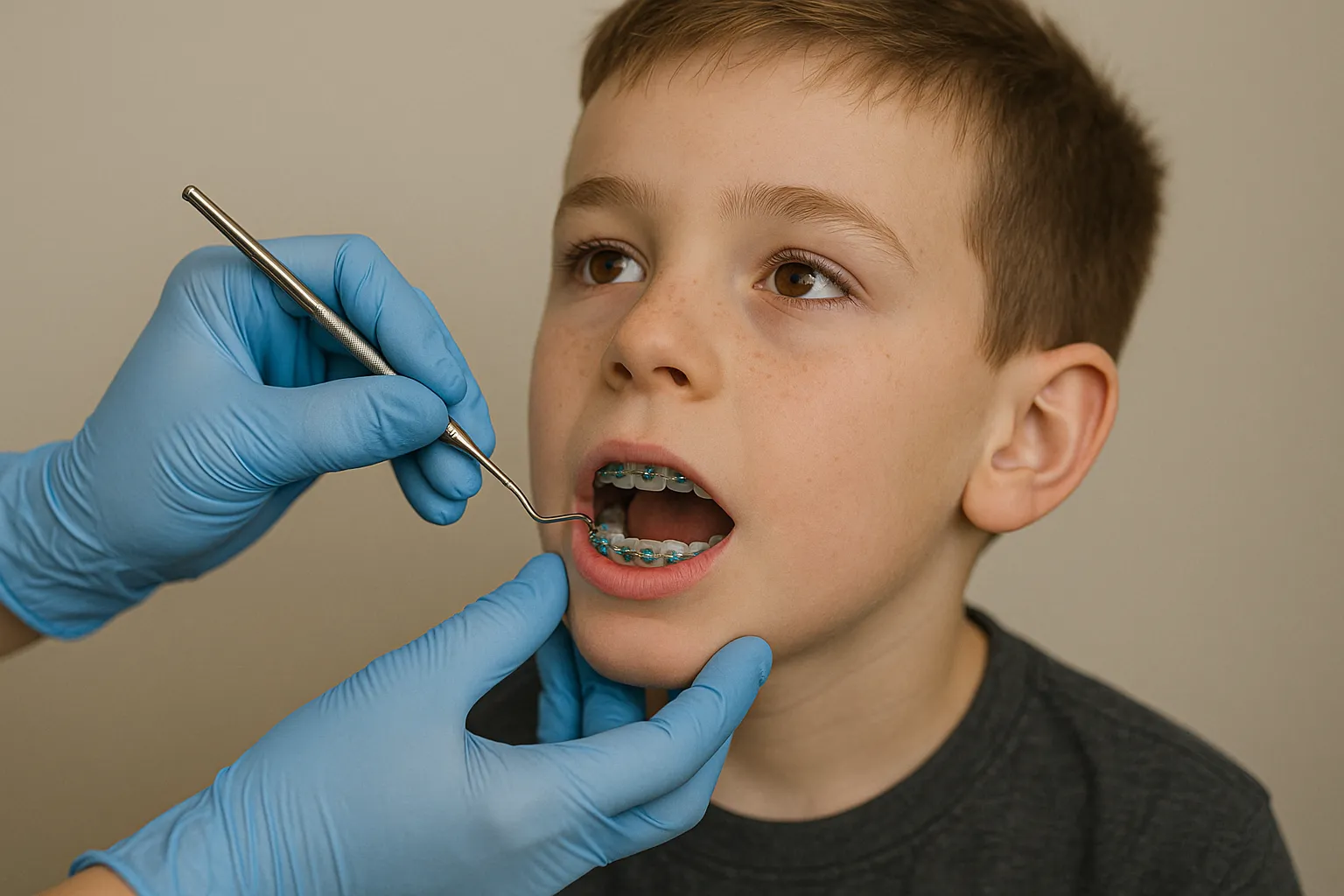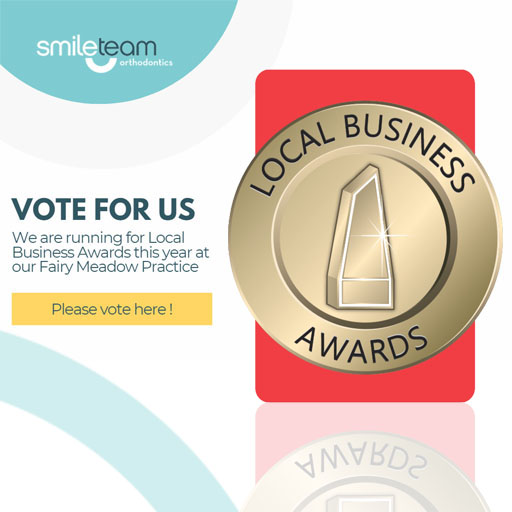
The process of orthodontic treatment extends beyond tooth alignment because it involves promoting healthy jaw development together with long-term facial equilibrium. Children and teenagers often find the Herbst appliance to be their most effective solution for correcting jaw misalignment. The appliance provides orthodontic benefits yet presents new obstacles, primarily during mouth protection needs during physical activities.
A custom mouthguard functions as the solution to protect both the treatment and the patient. Custom guards specifically made for dental hardware, including the Herbst appliance, are crucial for protecting the treatment along with the patient. This article examines the significance of these mouthguards and their unique features and benefits for maintaining child activity levels.
Understanding the Herbst Appliance in Child Orthodontics
The Herbst appliance serves as a permanent orthodontic device which orthodontists use primarily for treating Class II malocclusion, also known as overbite, in children who are still growing. The device functions by pushing the lower jaw into a more natural position relative to the upper jaw.
The Herbst appliance stands out due to its distinctive features:
- The device consists of metal rods which link the upper and lower jaws to direct growth development throughout time.
- This device stays with the patient for 9 to 12 months when their growth is most active.
- Many patients receive this device as an initial step in their orthodontic treatment plan or before beginning their braces treatment.
- The appliance stays inside the mouth at all times while the patient sleeps and eats.
- The appliance offers excellent results, but it includes metal components that heighten the risk of injury, particularly when the patient participates in sports activities.
Why Mouthguards Are Essential During Orthodontic Treatment
Most parents understand the importance of protecting their child’s teeth during sports activities. However, when a child is undergoing orthodontic treatment, especially with appliances like the Herbst device, the risks increase significantly. Mouthguards become essential not just for preventing dental injuries, but also for protecting the orthodontic appliance itself and supporting uninterrupted treatment progress. Without proper protection, even a minor collision or fall can cause painful soft tissue injuries, damage to the appliance, or setbacks in jaw alignment.
A mouthguard becomes essential to prevent injuries from sudden impacts:
- Cuts and abrasions on the inner lips, cheeks, and tongue.
- Damage to the appliance necessitates adjustment or repair work.
- Disruption to the progress of jaw realignment.
Any unexpected fall or bump during football games, recess activities, or everyday trips can result in painful injuries, which can both slow down orthodontic treatment and cause unnecessary discomfort.
The necessity of mouthguards extends beyond rugby and basketball sports because they provide protection during any activity with potential falls or contact risks.
Why Over-the-Counter Mouthguards Don’t Work with Orthodontic Appliances
Over-the-counter mouthguards are typically designed for general use and do not account for the presence of orthodontic appliances, such as the Herbst device. If you’d like to explore more about choosing the right protection during orthodontic treatment, read our guide on mouthguards for braces.
Common issues with generic mouthguards:
- The standard design fails to accommodate individual mouth shapes through its single size.
- The Herbst appliance faces increased pressure, which might cause its components to become loose or damaged.
- The increased thickness leads to unpleasant sensations, triggering a gag response, breathing problems, and speaking difficulties.
- The child becomes less inclined to wear the guard regularly because of these problems.
A custom-made mouthguard remains essential because improperly fitting devices actually compromise treatment outcomes, thus requiring customisation beyond any optional choices.
The Advantages of Custom-Fit Mouthguards
The creation process of custom mouthguards employs dental impressions and 3D scans to achieve an exact match for each patient’s mouth and any orthodontic hardware present. A mouthguard made by an orthodontist or dentist provides superior protection and comfort to patients.
Key benefits include:
- Herbst appliance hardware receives full compatibility through this design, which stops both pressure and misalignment.
- A well-designed fit ensures the guard stays firmly in place without causing any discomfort to the mouth.
- The child enjoys easy breathing and speaking because the physical activity allows better airflow.
- Children tend to use mouthguards more frequently since they provide natural comfort without disruptions to daily activities.
A well-made mouthguard becomes an essential component of your child’s equipment, similar to their footwear or athletic equipment.
Daily Use and Maintenance Tips

For long-term use and hygiene purposes, parents should promote appropriate mouthguard maintenance practices.
- Rinse the mouthguard under cool running water after each use.
- Use a soft toothbrush to brush the mouthguard gently without toothpaste to avoid bacterial accumulation.
- Keep the mouthguard in a well-ventilated protective case to prevent moisture buildup.
- Using hot water is prohibited since it may alter the material structure.
- The mouthguard may require adjustments when your child undergoes appliance modifications. Bring the device to orthodontic appointments for evaluation and replacement if necessary.
Real-Life Examples: When Protection Matters Most
In case a child wearing a Herbst appliance suffers a playground accident, such as tripping, a lip injury and tooth trauma could occur if the lower lip pushes into the appliance’s metal parts without a protective guard in place.
The correct fit of a custom mouthguard absorbs shock and maintains appliance position during impacts.
These situations are common, occurring every school day during sports activities, recess, bike rides, and other daily activities. Implementing a custom mouthguard helps prevent minor accidents from becoming serious setbacks.
Addressing Common Concerns from Parents and Patients
Although the advantages of mouthguards are evident during orthodontic treatment, some parents and patients may express doubts about their use. Let’s unpack a few of the most common concerns.
“Won’t a mouthguard interfere with orthodontic treatment?”
A custom mouthguard functions harmoniously with the Herbst appliance without any opposition. The guard is precisely designed to stay away from metal arms and allow normal jaw movement. The appliance receives protection from impact while the treatment remains uninterrupted by injury.
“Isn’t it only necessary for full-contact sports?”
While contact sports like rugby and martial arts create apparent threats, daily life activities also pose risks. Netball, cycling, gymnastics, and backyard play can cause injuries. The dangers of mouth injuries increase because of metal presence, so a mouthguard helps absorb and block these impacts.
“My child already has a mouthguard. Why upgrade?”
Generic guards might fit the teeth, but do not accommodate the appliance. The comfort, secure fit, and enhanced protection offered by custom orthodontic mouthguards lead to better compliance and regular use.
Making Mouthguard Use a Habit
The most effective protection requires regular use. Developing the habit of wearing a mouthguard requires as much attention as the device itself.
Here’s how to build consistent use:
- Add it to the equipment collection – pack the mouthguard with your child’s sports equipment and remind them to wear it before every use.
- Create visual reminders – Notes, labels on sports bags, or even checklists can help.
- Lead by example – When parents or siblings use protective gear, children view it as normal.
- Praise consistency – Commend your child when they remember to wear the mouthguard without being reminded.
Once mouthguard use becomes a habit, your child will be safer and less likely to experience treatment delays due to injury.
Supporting Ongoing Orthodontic Progress

The orthodontic process extends through several years and demands periodic readjustments, regular visits, and constant support. Mouthguards must adapt alongside your child’s needs, just like braces and retainers do.
Here’s how to stay on track:
- Check the fit regularly – Growth changes can cause a perfect-fitting mouthguard to require adjustment.
- Schedule periodic evaluations – Bring the mouthguard to orthodontic appointments for fit assessments.
- Replace as needed – Do not wait until it is cracked or uncomfortable; a poorly fitting mouthguard can cause problems rather than prevent them.
This proactive care mindset benefits both physical safety and treatment success.
Integrated Care: Mouthguards as Part of the Whole Picture
Orthodontic treatment is more than appliances; it aims to develop children who live, move, and grow with confidence. Protecting the mouth, face, and jaw requires proactive measures during high-risk situations.
Mouthguards operate as part of a larger oral health framework. Together with regular check-ups, good hygiene habits, a balanced diet, and early intervention, custom mouthguards support a lifetime of better oral health.
Maintaining a balanced diet for children’s dental health also supports overall oral development.
Visit Smile Team to learn more about paediatric orthodontic options and protective measures.
Final Thoughts: Supporting Movement, Treatment, and Peace of Mind
The goal of orthodontic treatment is to empower children to live freely, without restrictions. Whether they’re participating in sports, enjoying recess, or skateboarding with friends, children should feel confident that their appliance won’t limit their lifestyle.
A custom mouthguard protects the teeth, the Herbst appliance, and the entire treatment process, encouraging active participation without fear.
Through proactive protection, the goal of orthodontic treatment — a strong, functional, and confident smile — becomes fully achievable for the years to come.
